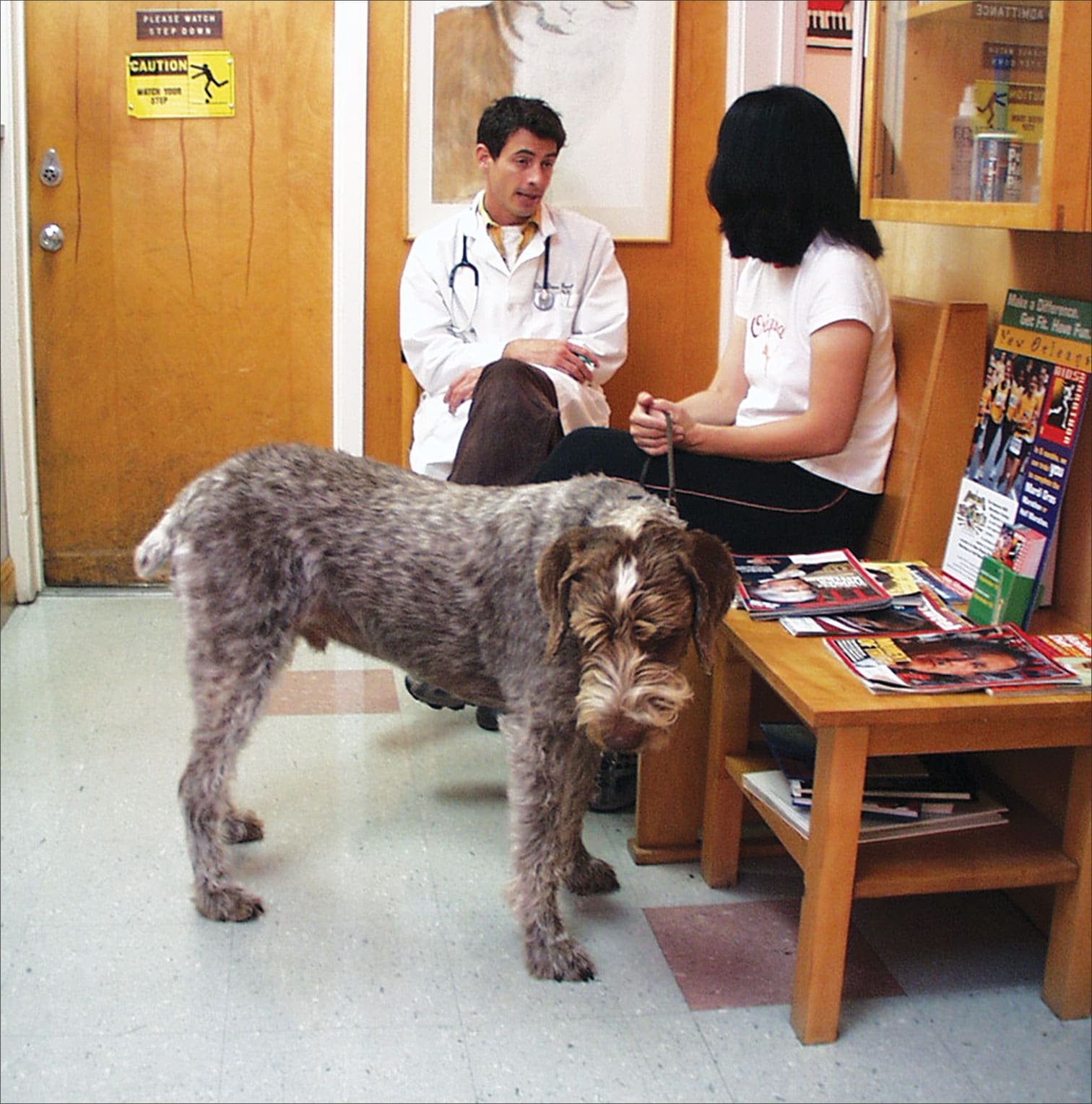According to the American Society for the Prevention of Cruelty to Animals, between five to seven million companion animals enter animal shelters in the United States every year, and three to four million are euthanized. Of the dogs entering shelters, about 60 percent are euthanized. Some lose their lives due to old age, illness, or injury, others as a result of shelter crowding, but behavioral problems are most frequently cited as the major cause of relinquishment or euthanasia.

Shelter statistics alone are only part of the picture; dogs with behavior issues are also euthanized by veterinarians upon owner request, as are many other dogs who display undesirable behaviors surrendered to rescue organizations. Some difficult dogs are abandoned to the streets or wilderness areas.
While genetics always plays a role in behavior, many serious behavior issues in dogs are a result of inadequate socialization or other environmental factors. The use of ineffective training methods, frightening or traumatic experiences, insufficient physical and mental exercise, neglect, and abuse are all additional stressors that affect behavior adversely, often profoundly.
Appropriate training can often modify problem behavior, and for more serious behavior issues, behavior-modification medications used in conjunction with training may also be helpful. But what if the underlying cause of a serious behavior problem is an undiagnosed medical condition? Behavior-modification training and medications for behavior will likely have little effect unless the medical condition is also addressed.
When to Consider Medical Involvment
If the family dog’s behavior changes enough for concern, a possible medical cause for the behavior change may not be considered by either the family or the trainer hired to “fix” the problem. And while some veterinarians are knowledgeable about the potential links between medical pathology and behavior, some are not. It’s a heartbreaking tragedy when dogs are relinquished to a shelter or euthanized for a behavior problem caused or aggravated by an undiagnosed, treatable medical condition.
The majority of abnormal canine behaviors are likely caused by environmental stressors. Illness, disease, and injury are far less often associated with behavior change, and as a result, may be the last factor to be considered, if considered at all.
While we don’t want to become hypochondriacs when it comes to our dogs, a possible medical cause for a behavior change should be first on the checklist of considerations, even if only to check it off in favor of a more obvious one. This is especially important when the behavior observed is uncharacteristic for the dog, and the change in behavior is sudden.
Sometimes the connection between behavior change and a medical condition is obvious. If a dog frequently shakes his head, scratches his ear, and repeatedly growls, snaps, and bites his owner’s hand when she reaches to pet him on the head, the owner will probably suspect an ear infection is causing the behavior and bring her dog to the veterinarian. But what if the dog demonstrates the same uncharacteristic behavior of biting her hand when she reaches to pet him in the absence of any other obvious, observable symptoms of a possible medical issue? The owner is not likely to think, “I better get Max to the vet. This could be the result of thyroid disease. Or perhaps his spine needs an adjustment. Or maybe he’s losing his sight.” She may assume that the problem is merely behavioral in nature and be more inclined to call a trainer, who may or may not be familiar with medical rule-outs for this sudden behavior change. If the dog has an undiagnosed medical condition that causes him pain or discomfort leading to biting humans or other animals, his life may be in jeopardy.
Sudden onset behaviors that indicate anxiety, fears and phobias, compulsiveness, depression, disorientation, moodiness, erratic temperament, and/ aggression warrant a trip to your vet’s office.
As a dog owner, you cannot be expected to be familiar with all the medical rule-outs for dozens of abnormal canine behaviors. But a general understanding that a medical condition may be at the root of your pet’s behavioral change may prompt you to see your veterinarian for possible early diagnosis and treatment before behavior deteriorates further or dangerously escalates.
It is neither a trainer’s job to be fluent in medical causes for abnormal behavior, nor legal for her to make a diagnosis. It is important, however, for a trainer to know when to refer her clients to her medical colleagues. The more knowledge a trainer has of medical rule-outs for abnormal behavior, the better equipped she will be to help her clients recognize when a visit to the veterinarian is needed – a visit that may heal the family’s relationship with their dog, and save the dog’s life.
Abnormal Behaviors and Medical Rule-Outs
In her comprehensive reference book1, Manual of Clinical Behavioral Medicine for Dogs and Cats, author and veterinary behaviorist Dr. Karen Overall devotes a full 137 pages to addressing abnormal canine behavior and behavior pathologies. In the manual, Dr. Overall divides the behavioral conditions affecting dogs into two chapters: those conditions involving aggression, and those not primarily involving aggression (allowing that the two may occur simultaneously). Included in her discussion of each abnormal canine behavior and behavioral pathology are rule-outs for the conditions, both medical and non-medical. The manual is an indispensable guide for many veterinarians and behavior professionals.
Table 1 and Table 2 (at the top right) summarize the behavioral conditions identified by Dr. Overall as having possible medical rule-outs, and are based on information provided in her book. Dr. Overall organizes her discussion of the behavioral conditions by actual diagnostic categories. As non-veterinarians we are not qualified to make medical or behavioral diagnoses, so the behavioral conditions in the tables are listed descriptively, by observable behavior (rather than diagnostic category), with corresponding medical rule-outs.
Current research stresses the importance of exploring medical components of what are commonly thought of as strictly behavioral problems. In 2012, two studies by researchers at the University of Montreal Veterinary Teaching Hospital investigated medical causes for two compulsive behaviors in dogs: excessive licking of surfaces and fly biting (defined by the authors as the dog appearing to be staring at something and suddenly snapping at it).2,3 The research suggests that gastrointestinal disease can cause the repetitive behaviors of excessive licking of surfaces and fly biting, and medical treatment for the GI issues significantly reduced these behaviors. Based on the results of this research, future studies evaluating medical causes for other repetitive behaviors, such as spinning and light chasing, may prove worthwhile.
A Trip to the Vet
If you suspect your dog’s behavior change may have an underlying medical cause, your vet can determine what tests are needed. A medical evaluation should include a complete medical history, thorough physical and neurological exam, lab testing of blood counts, blood chemistry, and urinalysis. Additional diagnostic tests may be indicated based on your dog’s symptoms (complete thyroid antibody profile, x-ray, ultrasound, etc.). If all test results are negative, evaluation by an experienced, qualified behavior professional is recommended.
Even if a medical issue is found to be at the root of a dog’s behavioral change, treatments and medications alone may not eliminate undesirable behaviors completely. There is a learned component to many of these behaviors, and, depending on how long they are practiced, behavior-modification training may be required.
For example, a dog who frequently attacked a canine housemate for months prior to diagnosis of hypothyroidism is not likely to immediately become best friends with the dog he attacked once he’s been given hormone-replacement medication. While the medication may make this dog feel much better and less irritable within a few weeks, the negative association that developed over time toward the other resident dog (as well as the other dog’s fear and response to his attacker) may require behavior-modification training to restore harmony. If, however, the diagnosis of thyroid disease happened early in the dog’s history of aggressing toward his housemate, after only one or two minor incidents, hormone replacement alone may resolve the problem.
The Take-Home Message
If a medical cause for a dog’s unwanted behavior remains undiagnosed, the risks to the health and welfare of the dog can be devastating. Undesirable behavior can lead to injury to humans and other animals, relinquishment, deteriorating physical health of the animal, punishment or abuse of the dog by the owner, overwhelming owner stress, and damage to the human-animal bond. Seek an evaluation from your veterinarian to rule out medical involvement. It may save your dog’s life.
Trainers Weigh In
Dog Gender Identity Issue
The client contacted me about a 4-year-old Heeler-mix who suddenly began attacking one of the owners. The owner was bitten several times and required medical care. The dog appeared to give no warnings and the behavior was unpredictable.

The dog had been neutered at nine months and was identified as a hermaphrodite by the veterinarian. Only one testicle had descended and the vet found an undeveloped ovary during surgery. At my suggestion, the owners brought the dog for an evaluation with a vet I recommended. Tests showed the testosterone level of the dog was extremely high (“off the charts,” according to the vet). An ultrasound revealed a mass and surgery was performed. The “undeveloped ovary” was actually an undescended testicle, the source of the excessive testosterone production. Once removed, the aggression ceased.
– Kim Kilmer, Kim Kilmer Consulting
Punished for Pain
My story of heartbreak was an aged Aussie (13 years old) who was referred to me for separation anxiety. I will not horrify you with all the insane advice the owner was given, including using punishment on this dog, which was so very, very wrong for so very many reasons. The bottom line was that the dog had a metastatic bladder cancer. I still have nightmares about how much this dog suffered.
– Leslie Sinn, DVM, CPDT-KA, Behavior resident, ACVB
He’s Back to Being Good
A woman called me for help with her normally friendly dog, who suddenly and aggressively began guarding his food bowl. I suggested she first get the dog checked by her vet. Three weeks went by without news, so I called her. She said her veterinarian (who was also a chiropractor) had found an issue in the spine (something out of alignment). The dog was adjusted and there were no further incidents of aggression.
– Shannon McCauliff, PMCT, CPDT-KA, Diamond in the Wruff
Don’t Stop Investigating
An unspayed puppy had periodic housetraining lapses during her first year, despite being a natural at house training from an early age. All urinalyses came back negative for UTI, but when the owner pressed the vet to do an exam, the dog was found to have a severely inverted vulva that was causing painful urine burns and repeated vaginosis. She had a vulvaplasty and never had another issue.
– Jessica Miller, PMCT, ANWI, Go Pawsitive, LLC
Suddenly Uncharacteristic = Trouble
A co-worker at my “other job” came to me about her mixed-breed, middle-aged female dog who was suddenly displaying uncharacteristic behaviors. Previously housetrained, she was peeing inappropriately in the house. She was also jumping onto tables, as well as “zoning out,” bumping into things, and seeming to forget where she was. I suggested a trip to the vet to look for the usual and to check for vision or neurological issues. The dog was diagnosed with a brain tumor, and sadly, was euthanized a few months later.
– Jenny West Schneider, PMCT, CPDT-KA, Camp Canine USA
CASE EXAMPLES from Among My Clients (and Family)
I’m a trainer, and was fortunately educated to be alert to the possibility that a medical problem may be contributing to my clients’ dogs’ behavior problems – or behavior issues in my own dogs! The following are just a few of the cases I’ve personally encountered.
Pain In the Neck
My client scheduled a behavior consultation because her 14-year-old male Spaniel had become increasingly aggressive over the last couple of years toward her and a female housekeeper, resulting in bites to both. When I arrived at the home for the appointment, the owner’s four barking dogs clamored around the door. I watched through the door window as, one by one, she removed the dogs from the room so that I could enter by grabbing their collars and dragging them, still barking, behind a closed door to the dining room. My inquiries regarding the incidents of aggressive behavior revealed that all took place when the dog was approached in circumstances where he was commonly re-located by grabbing his collar and dragging him. The owner reported that the behavior had escalated from growling when he was grabbed by the collar, to growling simply when she or the housekeeper approached, and biting when either one reached for his collar. The dog began to growl in the presence of the owner and housekeeper at other times as well, leaving the housekeeper afraid of him and the owner distressed enough to seek help from a behavior professional. Suspecting possible arthritis pain was triggering the veterinarian for an evaluation. Medication for arthritis pain, stopping the collar dragging and teaching the dog to follow the owner and housekeeper on cue prevented any further bites.
Not Just Happy to See You
On my first visit to the client’s home, her 14-week-old Golden Retriever puppy peed on the kitchen floor shortly after we began training, despite having been outside just prior to my arrival. At the time, I assumed it was due to excitement about someone new and the increase in activity. But at our next appointment, the puppy had another accident in the house about fifteen minutes after she urinated outside. The owner also complained that housetraining, despite following a normally effective housetraining protocol, was not going well, with frequent accidents in the house. I suspected a possible urinary tract infection (UTI ) and recommended an examination by the veterinarian. A UTI was diagnosed. After treatment with antibiotics, the infection seemed to clear, but she rebounded quickly. After a second course of antibiotics with another rebound, the
veterinarian discovered the recurring infection was due to a congenital bladder defect. The puppy’s urine was leaking into the area between the interior and exterior wall of the bladder, and urine retention in the tissue caused pressure, stretching the bladder. Surgery to repair the defect was successful, and after recovering, she was quickly and successfully housetrained.
Ain’t That Gland
I adopted Amber (in this photo on the left) when she was three years old. For the first year in our home, she was very friendly with our other two Ridgebacks (both males). Then there were three incidents of aggression toward the boys within two days, each occurring when I was petting her and one of the boys approached. The first time she growled and raised a lip, the second time she lunged, and the third time she attacked (no injuries). I separated her from the other dogs, and brought her to our vet the next day for an evaluation, requesting a complete thyroid antibody profile. The results were positive for hypothyroidism. She began a twice daily dose of supplemental thyroid. I kept her separated from the other dogs for about two weeks, and then began reintroducing them, watching for any signs of conflict. Amber is now 10, and with the exception of the behavior recurring briefly when her dosage needed to be adjusted, has remained her friendly self for the past six years with her “brothers.”




